As an entrepreneur, one of the most significant decisions you make is choosing the right business model for your enterprise. While some prefer a traditional brick-and-mortar business model, others opt for the digital or e-commerce model. In this blog post, we’ll discuss the benefits and disadvantages of both traditional and digital business models to help you decide which one is right for you.
Traditional vs Digital Business Model
When comparing the traditional vs digital business model, you need to consider the advantages and disadvantages of both models. The digital business model has become more popular in recent years due to its ease of accessibility and global reach. Let’s take a closer look at each model:
Traditional Business Model
 A traditional business is a physical store located within a specific geographical location that offers goods and services to its local customers. Traditional businesses have been around for a long time and are a staple in many communities. Start-up costs for traditional businesses can vary depending on the type of business, but they usually require a significant investment ranging from $20k to $100k.
A traditional business is a physical store located within a specific geographical location that offers goods and services to its local customers. Traditional businesses have been around for a long time and are a staple in many communities. Start-up costs for traditional businesses can vary depending on the type of business, but they usually require a significant investment ranging from $20k to $100k.
Traditional Business Advantages
Traditional businesses have their unique advantages such as:
Build a Personal Connection: One of the best ways to establish a personal connection with customers is through traditional business models. It leads to customer loyalty and makes selling easier. Physical Product to Touch and Feel: Clients can touch, see, and feel the product and decide for themselves whether or not they want to purchase it. It reduces the number of returned items. A Public Store Front Builds Reassurance: It builds a sense of trust in the business and reassurance that customers have a place to come back to if they have any problems.
Traditional Business Disadvantages
While traditional businesses have their advantages, there are also several downsides to this model:
Cost of Infrastructure – In traditional businesses, the cost of infrastructure is very high. Renting or purchasing office space can be expensive. Cost for Employing Staff – Management, security, sales, and record-keeping staff must be hired for traditional businesses. Huge Investment in Stock Maintenance – Each retailer must maintain a stock of the items they are dealing with, which can tie up a significant amount of cash. Shrink – Conventional businesses (retail stores) are at risk of theft or unintentional waste, and 43.7% of all theft or loss in a traditional business is due to employees. Locality Limitation – Choosing the right location is critical. The store must be located centrally so that customers can easily visit. Hours of Operation (Limited) – Traditional businesses operate for a limited time, typically from morning to evening and from Monday to Saturday. Less Scope for Expansion – The small space of showrooms or offices can limit the potential for business expansion in the future.
Traditional Marketing Methods
 Traditional businesses use marketing methods such as business cards, brochures, flyers, yellow pages, print advertising, and radio, magazine, newspaper, and television advertisements to reach out to customers.
Traditional businesses use marketing methods such as business cards, brochures, flyers, yellow pages, print advertising, and radio, magazine, newspaper, and television advertisements to reach out to customers.
E-commerce Business Model (Online)
What is E-commerce?
E-commerce or electronic commerce refers to the buying and selling of products or services over the Internet. It is also known as an online business, internet commerce, or electronic business. E-commerce has become increasingly popular in recent years due to the ease and convenience it offers. With the rise of technology and the internet, e-commerce has become an attractive option for entrepreneurs looking to start a business with low startup costs.
Advantages of E-commerce
Starting an e-commerce business has its advantages, which include:
 Low Startup Costs: The startup costs for an e-commerce business are significantly lower than those of a traditional business. You can start an e-commerce business with as little as $500 or less, depending on your business model. Global Reach: With an e-commerce business, you can reach customers from all over the world, which can increase your customer base and revenue. 24/7 Operation: E-commerce businesses operate 24 hours a day, seven days a week, allowing customers to make purchases at any time, increasing sales and revenue. No Geographical Limitations: Unlike traditional businesses, e-commerce businesses are not limited to a specific geographical area or location. You can sell your products or services to anyone, anywhere in the world. Better Data Collection and Analysis: E-commerce businesses have access to data and analytics, which can help them track customer behavior and preferences, improve their marketing strategy, and increase sales and revenue. Flexibility: With an e-commerce business, you have the flexibility to work from anywhere, at any time, as long as you have an internet connection.
Low Startup Costs: The startup costs for an e-commerce business are significantly lower than those of a traditional business. You can start an e-commerce business with as little as $500 or less, depending on your business model. Global Reach: With an e-commerce business, you can reach customers from all over the world, which can increase your customer base and revenue. 24/7 Operation: E-commerce businesses operate 24 hours a day, seven days a week, allowing customers to make purchases at any time, increasing sales and revenue. No Geographical Limitations: Unlike traditional businesses, e-commerce businesses are not limited to a specific geographical area or location. You can sell your products or services to anyone, anywhere in the world. Better Data Collection and Analysis: E-commerce businesses have access to data and analytics, which can help them track customer behavior and preferences, improve their marketing strategy, and increase sales and revenue. Flexibility: With an e-commerce business, you have the flexibility to work from anywhere, at any time, as long as you have an internet connection.
Disadvantages of E-commerce
 While e-commerce has its advantages, it also has its disadvantages, including:
While e-commerce has its advantages, it also has its disadvantages, including:
High Competition: The e-commerce market is highly competitive, and it can be challenging to stand out among the competition. Lack of Personal Touch: Unlike traditional businesses, e-commerce businesses lack personal touch and interaction with customers, which can lead to less customer loyalty. Shipping and Handling: Shipping and handling can be a challenge for e-commerce businesses, as they have to rely on shipping companies to deliver products to customers. Technical Issues: E-commerce businesses are reliant on technology and the internet, and technical issues can occur, leading to downtime and loss of sales.
Getting Started with Your Online WordPress Business – Key Steps
 Building a website can seem like a daunting task, but with the right steps, it can be a smooth and rewarding process. In this post, we will outline the key steps required to build a successful website, from choosing a business model to optimizing for organic search engine traffic.
Building a website can seem like a daunting task, but with the right steps, it can be a smooth and rewarding process. In this post, we will outline the key steps required to build a successful website, from choosing a business model to optimizing for organic search engine traffic.
Choosing Your Business Model
Before you start building your website, you need to decide on your business model. Will you be selling products or services? Will you be creating content to generate ad revenue? Defining your business model will help guide your decisions throughout the website-building process.
Picking a Domain Name
Once you have a business model in mind, you need to choose a domain name. Your domain name is your website’s address, so it’s important to choose one that is memorable and reflects your brand. Keep it simple, easy to spell, and relevant to your business.
Picking a Host
 After you have your domain name, you need to choose a web hosting provider. BlueHost is a popular choice, as it offers reliable hosting at an affordable price. Make sure to choose a hosting plan that meets your needs, whether it’s shared hosting for a small site or dedicated hosting for a larger one.
After you have your domain name, you need to choose a web hosting provider. BlueHost is a popular choice, as it offers reliable hosting at an affordable price. Make sure to choose a hosting plan that meets your needs, whether it’s shared hosting for a small site or dedicated hosting for a larger one.
Setting Up WordPress
WordPress is a popular content management system that makes it easy to create and manage a website. With BlueHost, setting up WordPress is simple and can be done in just a few clicks. Once you have WordPress installed, you can start customizing your site with themes and plugins.
Picking a WordPress Theme, Plugins, Widgets
Choosing the right WordPress theme, plugins, and widgets is crucial to the success of your website. A theme is like the design template for your site, while plugins and widgets add functionality. Choose a theme that is visually appealing and easy to navigate, and pick plugins and widgets that help enhance the user experience.
Copywriting (Writing Your Website Content)
Writing effective website content is essential to converting visitors into customers. Your sales page should clearly explain what you offer and why someone should choose your business. Make sure your content is easy to read, with clear calls to action and benefits that speak to your target audience.
Do I Need Payment Gateways
 If you plan on selling products or services through your website, you will need a payment gateway. This allows you to securely process transactions and accept payments from customers. Popular options include PayPal, Stripe, and Authorize.net.
If you plan on selling products or services through your website, you will need a payment gateway. This allows you to securely process transactions and accept payments from customers. Popular options include PayPal, Stripe, and Authorize.net.
Marketing Using Organic SEO
Finally, once your website is built and ready to go, you need to start driving traffic to it. Organic search engine optimization (SEO) is a cost-effective way to attract visitors by optimizing your website for search engines like Google. This involves creating high-quality content, optimizing your site’s structure and keywords, and building backlinks to your site.
Building a website requires careful planning and attention to detail, but with these key steps, you can create a website that is visually appealing, easy to use, and effective at converting visitors into customers.
Online Business vs Brick and Mortar: Why Starting a Digital Business in 2023 is the Smart Choice
In conclusion, it’s important to recognize that the world is changing rapidly and the traditional brick-and-mortar business model may not always be the most efficient or effective option. Starting an online business provides entrepreneurs with more flexibility, cost savings, and the ability to test the waters before fully committing. With the increasing popularity and convenience of online shopping, it’s no surprise that traditional businesses are struggling to compete. As a beginner, it’s essential to weigh the pros and cons of both models before making a decision. While there are exceptions to every rule, it’s clear that online digital business models offer numerous advantages that cannot be ignored. So take the time to research and plan accordingly, and you’ll be well on your way to success in the world of digital business.



